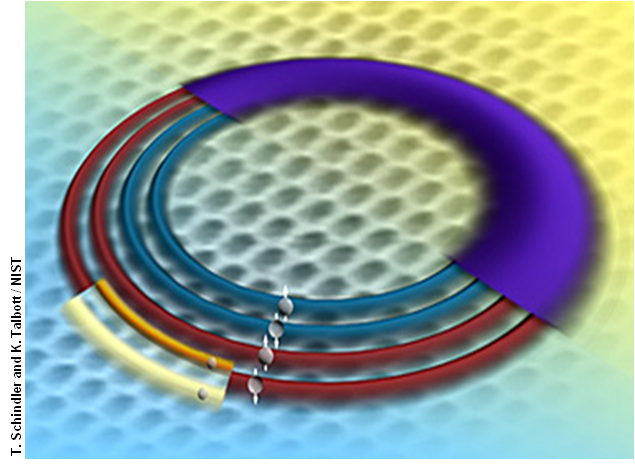 To fully understand the behavior of graphene's electrons, Georgia Tech and NIST scientists employ the extremes of ultra-low temperature and large magnetic field. In a new ultra-low temperature scanning tunneling microscope (ULT-STM) constructed at NIST, graphene remains pristine for weeks, enabling precise observations of electron energy levels and interactions. Using multilayer epitaxial graphene prepared at Georgia Tech, the collaborators study changes in the electron orbits that depend on the magnetic field and on the number of electrons. Their results have implications for future transistors that would rely on electrons to behave as an interacting “sea” instead of independent particles.
To fully understand the behavior of graphene's electrons, Georgia Tech and NIST scientists employ the extremes of ultra-low temperature and large magnetic field. In a new ultra-low temperature scanning tunneling microscope (ULT-STM) constructed at NIST, graphene remains pristine for weeks, enabling precise observations of electron energy levels and interactions. Using multilayer epitaxial graphene prepared at Georgia Tech, the collaborators study changes in the electron orbits that depend on the magnetic field and on the number of electrons. Their results have implications for future transistors that would rely on electrons to behave as an interacting “sea” instead of independent particles.